The Real Market With Chris Rising – Ep. 10 Sean Burton
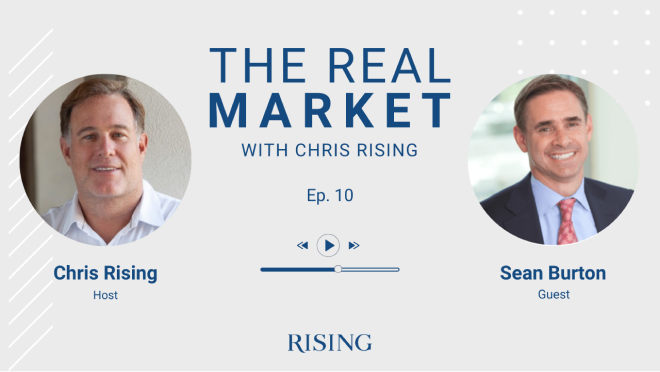
00:51 CR: I’m really excited about today’s podcast with Sean Burton, the CEO of CityView. Sean is a dynamic person who’s not only the CEO of CityView, but also the President of the Board of Airport Commissioners for LAX. We have a very interesting discussion about what’s happening in the multifamily development in the Western US and a great detailed conversation about the $5 billion that’s going to be invested at LAX over the next few years and really turn the airport into a first class airport. So, look forward to having you listen to this. It’s a very exciting discussion.
01:31 CR: Welcome to The Real Market with my guest, Sean Burton. Sean is the CEO of CityView, as well as the President of the Board of Airport Commissioners. Sean, I’m so pleased to have you on the podcast today.
01:45 Sean: Thanks, Chris. Thank you for having me on. I appreciate it.
01:48 CR: Well, I’m really excited about today because I think we get a chance to for the first time on my podcast talk a little bit about multifamily, multifamily development, and what you see out there in the world. But we also get to talk about your civic endeavors and what you’re doing to help make Los Angeles great in your role as President of the Board of Airport Commissioners. So I’m really excited about it and why don’t we jump right in and give us a little description about what your company CityView does? What your role is there, and I think the audience will be really interested to hear a little bit about some of your development plans.
02:23 Sean: Sure. CityView is an urban multifamily developer and private equity fund sponsor. We’ve been in business since 2003 and we focus like a laser on urban West Coast gateway city mixed use and multifamily projects. So we’re all the way from San Diego to Seattle and as far east as Denver and Boulder, those are our primary markets. And our goal is to find great sites in cities, near transportation, near jobs, near infrastructure, culture and night life, and build these urban mixed use projects that really try to attract millennials and young professionals and people who wanna live in heart of the action. And we’ve been focused on that since our founding 15 years ago. This is actually our 15-year anniversary year, so we’re pretty excited.
03:18 CR: And is everything ground up development, or do you also acquire, say, value add type properties?
03:25 Sean: We do both. In the last five years the vast majority of what we’ve done has been ground up development, because that’s where we see the best opportunity and the best place for us to add value for our investors. In 2010, ’11 and ’12 we did a ton of value add because after the great financial crisis, we saw a lot of opportunities to buy projects at a deep discount to replacement cost. So we did a lot of that, but really, starting in 2012, we shifted back to a development strategy and that’s almost primarily what we do today.
03:56 CR: And is there a reason why you’re focused mostly West Coast? Is there some natural abilities that you’ll have on the West Coast or is it more market-driven?
04:07 Sean: You know, it’s a little bit of both. We love the West Coast markets. We love the story of the West Coast. You have great job growth in the markets that we’re in. You have great demographic growth. You tend to have great weather, maybe not as much in Seattle, but definitely here in California. And then we’re based in Los Angeles and have been since our founding. One of our jokes, as we say, it’s management by Southwest, and any project we can get to in two hours on Southwest is, can be a good market for us.
04:35 CR: Well, I certainly know that capital out there likes the rifle shot, likes the people who really understand the market that they’re in. Can you describe right now in the markets that you’re looking at here on the West Coast, what are the hot markets for you? Where would you like to be? Or where are you building and owning right now?
04:55 Sean: Yeah, I’ll give you a couple of examples. We love to be near great jobs. So a huge part of our focus is thinking about where are the jobs of the future? Where do you have great job growth? We’ve been very heavy investors in the Bay Area in the last decade. We’re in projects, South of Market in San Francisco. We’re in Berkeley across the street from the university. We’re down in Menlo Park next to Facebook. We’re in Mountain View next to Google and Linkedln. So we love these great locations where you’re attracting the best and the brightest renters who are getting the job of their dreams and following their dreams, and they wanna be in those locations. Those are the kinds of markets that we really like. The other aspect is we like markets where it’s difficult to build, where there’s high barriers to entry. And the reason for that is in those markets, we feel like we can bring our expertise and our experience and our know how to really create value for our investors. That’s tough to do and, for example, in a lot of markets in Texas, where you have very strong demand, but it’s much easier to build. So we like to focus on these challenging markets that have strong demand, but weak supply.
06:11 CR: And since a lot of what you do is in California, do you have any concerns about the cost of living here and what it takes, the cost to build something and what it takes to get it done in California? I understand the supply constraint side, the other side of that coin is, are you afraid that it’ll be a pressure on demand?
06:31 Sean: We still see a very strong demand in the sub markets. I worry as a citizen of California, and I worry for my children about the cost of living and how it’s gotten out of control. But we’re big believers, and one of the best ways to address that is to build more units, is to create more supply, and I think that’s sometimes lost in this debate. There is a focus on affordable housing, and we have a lot of affordable housing units in a lot of our projects, and we’re happy to do that. But the only solution isn’t that, the solution is to build more units so you can take advantage of supply and demand, and drive prices down more. So it’s something that we’re concerned about. We do think that from the demand side, you still see millennials flocking here from all over the country and all over the world, really.
07:22 Sean: If you have a great idea and you wanna be innovative and you wanna place it, you can launch that idea, and launch a new business, there’s few places I can think that are better than California to do that. Whether that’s traditionally up in Silicon Valley, as we’ve all heard about, but also here in Los Angeles. Most people don’t know that LA County actually has more tech jobs than either Silicon Valley or New York. So there’s just tremendous opportunity, and then you add our terrific weather and everything else going on, and you see why people wanna move here and start their career and start their lives. So we’re pretty bullish on the West Coast markets for the long run for that reason. We do think we have to address some of the infrastructure issues, like the cost of housing and traffic, etcetera.
08:09 CR: What I find interesting is as people in the real estate business, we all talk about affordable housing, and people talk about Section 8, and you just mentioned that you have affordable units in your projects. But can you give us… Does affordable equate to less than desirable, or how do you view affordable housing, and what it means both for the experience and how people qualify for it?
08:35 Sean: Well, I’ll tell you, what we mean by affordable housing, and we do in our projects is simply the price that the renter pays for the unit. If I took you into one of our projects and I showed you a unit that was affordable by someone who made, let’s say, 50% of the local salary of the area median income, and I showed you another unit of someone who made, let’s say, four times that. You actually wouldn’t be able to tell a difference in the units. You wouldn’t tell from the location, you wouldn’t tell from the floor, you wouldn’t tell from the finishes. We make our affordable units exactly the same as our market rate units, we limit our renter pool to a certain income level. And the way it works is we’ll work with a non-profit, or we’ll work with the city, that’ll go through a qualification process. The city and the state have very strict rules about who can qualify for affordable housing and the paperwork you have to fill out to confirm your income, etcetera. So we’ll work kind of hand in hand with the city or non-profit to qualify people, and then we provide them the unit at the discounted rate.
09:45 CR: What I find interesting is I agree with you. I think the way that we have housing become more affordable, is we build more of it. We build more of it with density and we build it around transit. What I find interesting is how the nimbyism, in their attempt to try to maintain a quality of life, they think they have, are producing policies that is actually making it more unaffordable for people. So what’s your basic argument when you go in and you need to get something entitled? How do you convince a community that density is good, more units is a good thing for them? How do you explain that to people?
10:32 Sean: It’s an iterative process, and we spend a lot of time very early on in the design phase, working with communities, having community meetings, going through planning and design sessions, so that the community’s really heard. We think that’s a really important piece, that often, I think, developers miss is they go in and they try to jam a project into a community, and they tell the community, “You don’t know what you’re talking about, we know better, we do this for a living.” And that’s absolutely the wrong approach. Our approach is to work with the community, understand what they want, but also explain to them that this is a business transaction, and we have investors, and we have to make an appropriate level return, because investors are gonna take a risk.
11:14 Sean: And we’ve generally found people are very reasonable when they’re included in the process from day one, when you listen to them. They can’t get everything they want, but they wanna make sure they’re heard, and you’re doing the best to find a project that works for everybody. And so often we’ll add community space to our projects, we’ll add certain architecture that’s important to them, lighting, trees, landscaping. We cannot over densify, we’re not gonna go into a community that’s got a bunch of two and three, and four story buildings and build a 15 story high rise. We don’t think that fits in the scope and character, we don’t think it’s good for the community, and we don’t think it’s good business. So we’ll also try to design something that fits appropriately and work with the community on that from day one.
12:06 CR: We all know that entitlement in California, but anywhere in the West is difficult. Do you have any war stories about things that were challenges that you overcame or challenges that you couldn’t and you had to move on?
12:22 Sean: Well, we spend a lot of time early in the project, not just dealing with the community, but dealing with the elected officials. And the first meeting I will have when we identify a site where we wanna entitle is to sit down with the local elected official and say, “Here’s what we’re envisioning generally… And we’re gonna meet with the community, we’re gonna design it, but we’re thinking of X amount of units and maybe some retail, etcetera.” And we’ll get a sense from them very early on, if that makes sense or not. We’ve found elected officials to be very straightforward on that front. They’ll say, “Here are my priorities, I want this, I want that, it’s really important to me.” For example, we just went through a project that we entitled near USC in the 9th Council District. We worked with the councilman very close on that, and he had a bunch of priorities, including really making sure that we could try to hire as many people from the local community as possible.
13:19 Sean: He wanted to make sure the project fit within the community and its orientation. Some other projects have been built and they look more like like a citadel, like a fort, that’s trying to protect itself from the community. He really wanted us to design a project that was an integral part of the community, and was open and the community could be proud of and there’d be retail the community could use. So we factored all that into our design and ended up creating something that is gonna be something the community’s proud of and fits in, and is authentic to the neighborhood versus something that looks like it was designed somewhere else and just plopped in there, because that was the most efficient. So that’s really been our strategy and we’ve found it to be successful. By the way, sometimes I maybe sit down with an elected official and they say, “I want this, that and the other,” and we can’t make it work, and then we move on, because it’s not gonna be a good fit, and we gotta focus on communities where we can make a difference and they want us to be here.
14:21 CR: I often find that entitlement today is more like a political campaign than it is necessarily real estate finance 101, and you’re pretty well suited, given your background working in the Clinton White House and O’Melveny & Myers, can you talk a little bit about, how did you get into the real estate business? Is this something that has been inspiring to you since you were young or did you fall into it?
14:46 Sean: I had worked in politics right out of college, I worked in the Clinton White House in ’93 and ’94, which is an incredible experience. We were all there to change the world. And he had a lot of energy and a lot of young people, and I really started to learn how to work with cities and communities and enjoyed that aspect of it. I went to law school back in New York at NYU, and then worked for a big law firm. And I did a lot of real estate when I was at the law firm, and I love the tangible nature of it. I love the fact that I was working on deals that weren’t just trading things around, were actually creating value and getting things built. So after a five-year stint in corporate venture capital and private equity at Warner Brothers, where I learned to invest, I decided to come back to real estate and saw a great opportunity in what we wanted to build at CityView.
15:46 Sean: The whole concept of CityView when it started was to take public pension fund capital, and that meant a lot to me, because I have a brother who’s a firefighter who was married to a teacher, who is really, really focused on their hard work over a lifetime, is gonna pay off at a pension that they can live on, taking their hard-earned capital, investing it, giving them a return that can help support and secure their future, but still build projects that are going to improve the communities that we’re in. It really seemed like… At the time they used to say “double bottom line,” and we really took that to heart. So when I had the opportunity to co-found a firm that was gonna do good for pensioners and police officers and firefighters, and teachers and nurses, and also do good for communities, it seemed like a great way to focus my career and spend my time.
16:48 CR: Can you talk a little bit about the inception of the firm and maybe how it’s changed and evolved, and really what are some of the challenges you face that kept you awake at night?
17:01 Sean: When we first founded the firm, the focus was on for-sale housing, we had a big public pension fund investor who was interested in seeing… At the time we called it “in-fill housing,” that term has fallen out of favor a little bit, but it was housing in cities. And the focus was on creating ownership opportunities for people. As you know, until 2008, the vast majority of Americans in the middle class who built any sort of net worth did that through owning a home. And so our goal was to create smaller homes in cities where people could have this ownership opportunity. And we did that for a number of years, ’til about 2008, and then obviously, we hit very serious head winds, as everybody else did in the housing market and the general economy. And we made a decision at that time that we were gonna move to multifamily, move to rentals, away from for-sale, because one, we thought we could build a lot more units and create a lot more housing. And two, we thought that was kind of a better fit for institutional investors.
18:09 Sean: Multifamily housing’s much more predictable. It creates stable, regular cash flow, and so we thought that would be the right way to take the company forward, and we made that shift in 2008 and ’09, and now do really exclusively multifamily.
18:29 CR: And then maybe a little bit about how you… There had to have been some challenges, you don’t just go tell an investor, “Well, we’re doing condos and for-sale housing, and now we’re gonna do apartments.” What was that discussion, and how did that process go?
18:45 Sean: Yeah, it was a difficult time. We had a lot of projects under way. We had a lot of banks that got in trouble. I remember when one of our banks got seized on a Thursday night, and we had a loan draw in for them. We were expecting proceeds from them on an existing loan for one of our projects. And I remember we stayed up all night trying to figure out if we were gonna get the loan or not, and if the cash didn’t come in, what we were gonna do because we had people building on site, contractors that we had to pay. When the FDIC seizes somebody, that’s difficult, they shut everything down when they come in, while they’re figuring out what to do. So we had a lot of difficult times in 2008 and 2009.
19:35 Sean: I will tell you, I was impressed with our investors, because they had a long-term view. They liked the sites that we had chosen. They liked the markets and the cities that we were in. And what we pleaded with them at the time was for patience. We said, “Look, we really believe in what we’re doing here. Now, these are cities people are gonna want to live in. These are good locations. Give us time to work through this with the bank, work through it with the contractors, let us finish out these projects and we’ll make sure you get out in one piece.” And, so there was a lot of tense conversations. There was a lot of flying around, sitting in people’s offices trying to explain to them why we needed more time, and why we thought there was value at the end of the day. But I give a lot of credit to our investors for being patient, trusting in us, believing in us and allowing us to build through. And so we were able not only to do that, and to take care of our investors, but eventually to raise more capital and continue to grow the firm. So I feel very lucky for that. Very fortunate.
20:39 CR: And how did you… At the time, your kids were pretty young, I think. They were probably… Going back 10 years, they were probably five, six, seven. How did you deal with that stress on a… I remember it very well, too, and it had ramifications, both physically on me and with my family. How did you deal with it?
21:00 Sean: Yeah. [chuckle] It was an incredibly stressful time. I’m fortunate I have… My wife is tremendously supportive, and has a long-term view, and believed in what we were trying to do. I gotta tell you, this is going to sound silly, but at the time I was coaching my son in baseball, in Little League, and that was an incredible distraction, a release, opportunity to spend time on a ball field, not think about banks and real estate and what was going on in a larger economy. So that was very helpful. And then we really tried to focus on understanding what I could control, what I couldn’t control, and then not worrying about the stuff I couldn’t control and focusing on what I could. So it was… There’s something that relaxes you when you say, “That’s just out of my control, and no matter how much I stress or what I do, I’m not gonna change that. So let me throw my energy and my effort and my focus somewhere where it can make a difference.” And I think I really tried to refine that focus during the downturn to not go crazy.
22:20 CR: I share a lot of the similar experiences, and I do agree with you, there’s nothing like coaching one of your kid’s sports to give you a little perspective on life. I often tell my children that life’s not a movie. It’s not over in two hours, something doesn’t happen and then you have to deal with it in the next half hour. So I have great empathy for what you went through, I was going through it as well. And I gotta imagine that you developed some relationships during that time and learned some lessons that are driving your business today. Anything you can share about that? Whether it was when you’re in the foxhole with people, you developed some relationships, or just you developed… If you’re in there by yourself, there’s some lessons that you carry on.
23:12 Sean: Yeah, so a number of things. One is I focus on relationships. We have inch-thick legal documents with all of our partners in every one of our projects. But when the world went sideways in 2008 and 2009, I felt that wasn’t helpful. What was helpful was, who did you have a relationship with, which partners did what they said they were going to do, stood up and did the right thing? And who could you really be creative with? Who could you say, “I know what the documents say, but we’re in this together, let’s figure out a way out of this together.” The lesson I learned from going through that was we always spent a lot of time picking our partners carefully.
24:00 Sean: That is our number one consideration now. We have a saying in the firm, “There’s no such thing as a good project with a bad partner.” You can be the greatest site in the world, you can have the best land bases, but if you have a partner who doesn’t see the world the same way you do, who doesn’t have integrity, or share your values, then it just doesn’t matter how good the site is. So that’s something that… That’s definitely a lesson learned.
24:26 Sean: I will say another one has to do on the debt side, is really working with banks who you have a relationship. So when there is an issue and you gotta pick up the phone, you know who’s gonna answer, you know who’s gonna be dealing… You’re gonna be dealing with, and who you’re gonna get out of this together with. We’ve applied that lesson as the markets improved, and we’re now doing all these urban projects in great cities. We’re blessed to have a lot of different banks who wanna finance those projects ’cause they wanna be in those markets, and they wanna work with a more experienced sponsor. And we go with banks who we have good relationships and we’ve worked through issues with, even if maybe they’re a little bit more expensive. Maybe you’re not getting the absolute lowest rate you could. But you’re trading that for more flexibility, extensions, optionality, and working with a team of people you trust. So when there is another downturn, and there will be one, we know who we’re dealing with. So that focus, you said it earlier, Chris, you focus on relationships, focus on people, focusing on people you have history with so you know how they act when they’re in that foxhole with you. ‘Cause that’s when you see people’s true colors. That’s definitely been a lesson for us, and for me, personally.
25:45 CR: I would echo everything you just said. I think one of the things that it’s undervalued in the Google, iPhone world we live in, where we want everything to be DoorDash, we wanna… Is that real estate, especially real estate, doesn’t really line up that way. And at the end of the day, there’s so much gray. If you cannot talk to somebody and talk somebody through the issues, it makes for a very painful experience, life experience. And it also, I think, is the detriment to the investment. And also…
26:18 Sean: Yeah.
26:18 CR: Yeah, if everything has to be binary, yes and no, zero or one, I don’t think you have a profitable as projects as if you can talk through issues and move things left and right, and put things out, and then move things forward. So I think those are really good points. And what I find amazing, too, about what you’ve done is… I don’t know how many people know, and we’re gonna talk about it, is you went through ’08 through ’10, and then as things started to pick up. But you didn’t just devote all your time to your family and your business. You’ve been an incredible public servant. You’ve served on the LA Planning Commission, and you are doing, I would say, hero’s work as a… In your role as president of the Board of Airport Commissioners. Before we get in what you’re doing, talk about it, the motivation to have a civic impact.
27:10 Sean: Sure, sure. Well, it’s always just been one of… It’s something that’s important to me, and values that I was raised with was to always try to have an impact in your city or your community, however you define that, big or small, local, state or national, but to do something other than just for yourself. And I’ve been fortunate to have some great opportunities. I worked in the White House, as we talked about, very early on. That was formative in seeing the effect that positive government and civic work could have on a community, or more broadly. I spent eight years as an intelligence officer in the Navy Reserve. I joined after September 11th. That was incredibly interesting work, important work, valuable work with some terrific people who care very deeply about the country, and put themselves in harm’s way in order to protect the country. And I’ve really tried to be involved here in Los Angeles. I served on one of the area planning commissions on the West Side of LA as one of my first commission appointments, and learned a lot about variances, and lot line adjustments, and neighborhoods and communities, and how neighbors felt about development. I spent five years on the City Planning Commission, appointed by Mayor Villaraigosa, where I really started to understand how the city does its planning, how decisions are made, and where a city can really be impactful on how a city grows and develops.
28:47 Sean: And then in 2013, right after Mayor Garcetti was elected, was asked to serve as the President of the Board of Airport Commissioners. That was really my dream job. And I was excited about the opportunity to really try to make an impact on a really important asset, not just for LA, but for the whole region at LAX. There was lots of issues when I showed up there with the rest of the board. There was major litigation with all the community, all the surrounding cities. We were in litigation with Ontario over the ownership of that airport. There wasn’t really a fleshed out master plan about how to deal with the growth in the airport over the last few years, and the terrible traffic issues. So with a lot of support from the mayor and the council, we were able, as a board, to jump in and really think about how to fix these issues. We settled all the litigation with the local communities. We sold Ontario Airport to an Ontario authority, and were able to take that money and roll out back into dealing with our own infrastructure, as you said, LAX.
30:06 Sean: And then last week, after four-and-a-half years of hard work by the LAX team, signed a contract for, I think it’s the largest contract in the history of Los Angeles, it’s about a $5 billion contract to build a 2.2 mile people mover train that’s gonna finally connect LAX to the public transit and the Crenshaw Line. It’s going to pull up to 50% of that terrible traffic out of the central terminal area and continue to work to provide a great experience for our customers at LAX. And LAX is the first thing a lot of people see about California, about Los Angeles, and about the United States. And when they have a terrible experience, it colors their whole trip here. It colors their view. Our goal has really been, and it starts with the Mayor, to create a great guest experience, create a world class airport that’s emblematic of a world class city in Los Angeles. And it’s been great that the Mayor has given us the vision and the resources to focus on that. And I think we’re making real progress.
31:21 CR: I think… I’m an optimist, but I think there’s a lot of people who are very cynical when they talk about what can government do on something as large as an international airport sitting in West Los Angeles, and you have… And we’ve been fortunate. I have traveled to some of the great airports in the world. Is it really gonna be a world class, really top of the line airport? Are we just putting more band aids here to try to see if we can just keep it afloat?
31:51 Sean: Yeah. No, no, it absolutely is. And I think we’re well on the way. I think anybody who’s been in the Tom Bradley Terminal, the new international terminal, which by the way, was envisioned and developed by the last Mayor and Board, they did a terrific job on that, sees what a world class terminal looks like. I would put the Bradley West Terminal against any terminal in North America and most other ones in the world for quality, for efficiency, for the type of retail and restaurants that you have. And we’re now doing that throughout all the terminals. We did a $500 million upgrade to terminal one where Southwest is. We’re doing a $2 billion dollar upgrade with Delta on terminals two and three, a similar size project with American, working with United on terminals seven and eight.
32:45 Sean: So we’re really trying to create this great experience inside the terminal. But my biggest concern has been, it’s been so difficult to get in and out of the airport, and if… You can do all the great work inside the terminals if you want to create a great experience, but if people have to sit for an hour in traffic to get into the airport, they’re frustrated, they’re angry, they’re annoyed. And so that’s why creating this land side architecture to build this people mover, to build a new rental car facility so we can consolidate all the rental cars, is so critical. And I think as we finish that over the next four or five years, they’re gonna see what a world class airport can be in Los Angeles.
33:27 CR: So you think the projected completion date is five years or so? What do you think?
33:32 Sean: Yeah, so right now we’re targeting April 8, 2023. That’s the latest date for the people mover. We’re in the process of going through the requests for proposals on the rental car facility which will be connected to the people mover and sit right off Century Boulevard and the 405. And that will finish in the same time frame. The goal is to really have everything up and running by 2023, but we will be opening things in stages. You won’t have to wait ’til 2023 to see all the improvements. It’s just, the entire system will be done by then.
34:09 CR: So this isn’t being pushed just to get done for the 2028 Olympics. This is on a timeline that people really in the next five years will have a radically different experience going to the airport?
34:20 Sean: Absolutely. The Olympics are amazing and important, and we definitely wanna have all of this done before that, but that wasn’t the driving factor. The driving factor was when the airport was designed in the ’60s, it was really designed for about 40 million passengers. When I became President of the Board in 2013, we had 64 million passengers, and last year we had almost 86 million. So you have a lot of passenger growth, and we need to do the right thing for those passengers. We need to do the right thing for the surrounding communities so they’re not clogged with traffic. And investing in this people mover and tying that to everything, the good work that’s happening at Metro and the Crenshaw Line is a way to solve that. So the Olympics will benefit from it and all the people who come in for that, but it’s really Angelenos and guests of LA that need to benefit from it as well.
35:15 CR: Now, how much of what’s being done is gonna rely on change of habits? Because we talk about people mover and things like that. Los Angeles isn’t a city that I really think of, “I’m gonna take my luggage and get on the Gold Line and then get myself out via public transportation to the airport.” But it sounds to me like a lot of this is being built around the concept that we will have a Los Angeles that is less car-dependent for everything we do.
35:45 Sean: I think it is built around that concept, and it’s built around the concept of creating optionality. So by the way, when you go to the airport five years from now, if you wanna drive your car in and you wanna pick someone up or you wanna park across from your terminal, you’ll be able to do that. That’ll still be your option. But maybe when you get off the 405 freeway at Century and you could park right there where the rental car facility is, and let’s say it’s $6 a day. I’m just making that number up, but it’s $6 a day. And you can hop on the train and in eight minutes you can be at your terminal. You may decide if that makes sense for you, or you say, “Look. Maybe I wanna drive into the terminal and it’s gonna be $30 a day. And it’s worth it to me to do that.” So we’re gonna put the optionality and the control in the hands of the passenger, but create lots of incentives to park in different places, travel different ways. We think that’ll make a huge difference. And one thing for sure is you’re not gonna have all these rental car buses that are going to the terminal area, ’cause the rental car facility will be attached to the train. You can imagine how much traffic that will pull out.
37:00 Sean: We think creating an optionality is really important. The other thing people don’t realize is that 50,000 people a day on average set foot at LAX to work in some capacity. They could work for LAX. They could work for the airlines or concessionaires. They could be doing construction. So all of those people now have to take cars into the airport and the terminal areas. So if we can create incentives for them to take the train, to take public transit, that will alleviate traffic and obviously be great for the environment too. Lots of different ways to improve the experience.
37:34 CR: Well, before we move on, one last question about this, and I think I know the answer, but I’m gonna put it out there. This $5 billion project isn’t gonna put the city $5 billion in the hole. How is this being financed?
37:48 Sean: Yeah, so the best part about it is, not a penny of anybody’s tax dollars is going towards this project. I’m very proud of the team. We run LAX at a profit and we take 100% of that profit and we roll it back into these improvements. So it goes back in. And then we have bonding authority, because we keep almost $800 million of cash on hand for a rainy day. The airport’s run very responsibly. They have excellent credit ratings, and they’re able to borrow at attractive rates as well. And then, what we did as part of this project, is we actually created a public-private partnership with a private sector company and they invest in their own equity to not only build this people mover, but also operate and maintain it. The interests of the private sector align with the public sector to run… To have a very efficient project that works for the passengers and employees at the airport. So none of your tax dollars, no hole for the city. All paid by LAX out of our existing cash flow and bonding authority.
39:13 CR: Well, I gotta tell you. Here’s the question that I wanna ask, is you’ve been married 20 years to a terrific woman in Theresa. [chuckle] You’ve got a son who’s 17, Russell, and you’ve got Grace who’s 16. You do triathlons. You do travel and you love politics, but how do you shut off? I mean, geez, it seems like you are going 24 hours a day. [chuckle] What do you do in a world where I can text you at any time and most likely most people expect a response immediately?
39:42 Sean: You know, [chuckle] you’d probably get different answers if you ask my family than if you ask me. And I am very fortunate that I have a wife and kids who are very supportive of a busy schedule. What I do personally is I really… Going back to what I said earlier, I really try to focus on working to make an impact and what’s the best use of my time, and I try not to spend a lot of my time spinning my wheels about things that I can’t control. I will tell you, exercise is critical for me. The only way I can keep my head clear is to exercise regularly, and one of the things, I started triathlons once I gave up coaching, basically after coaching my son’s all-star team for four years and taking his team to Cooperstown. I had to hang up my cleats and I miss that, and so I dove into doing triathlons and that’s been a great experience, ’cause there’s some competition to it, and there’s a lot of training around it and it keeps me focused in that sense.
40:43 Sean: That’s really important to me. And we love to travel. That’s the real way I turn off. Our kids have traveled a lot with us. It gets harder and harder, as athletes, in the summertime for them to do that, but my wife and I travel and really get into the mountains, hiking, and biking, and fly fishing. And one of the things I love about fly fishing is I’m not checking my phone, and all you’re thinking about is, is that fish striking? I’m not thinking about work or anything else, so looking for those opportunities to truly disconnect and recharge are absolutely critical for me.
41:22 CR: Given all the things that you do, and you do more than just the civic stuff for the city and the airport. But one of the things you do is you interact with young people. If somebody came to you today and said, “Look, I really love the idea of building apartments or being involved in the construction and the design and development of apartments,” or for-sale. What kind of advice would you give a young person maybe out of college today about how they would get into your business?
41:53 Sean: Yeah. I think, first of all, working on something you’re passionate for really makes a difference. So, really spending time thinking about what’s important to you. How do you wanna spend your days? What do you, first, you think is valuable, and then if you can find a career that lines up with that, I think you’re gonna have more success if you do that and you’re gonna enjoy it more, which really matters. And I think being substantive. I think I meet a lot of people our age and a lot of people younger who talk just about relationships and networking, and those kinds of things, and that clearly matters, but it’s really being substantive, understanding your business, taking pride and understanding all the details, you really know it like the back of your hand, and then combining that with good relationships, with being out in the world and understanding what other people are doing. Not just sitting in your own cocoon, but really trying to understand what else is happening out there and making good relationships.
42:53 Sean: That balance, I think, leads to the most success. And you don’t wanna be one-dimensional. We live in a multi-dimensional world, and I think, to succeed in it, we have to be multi-dimensional as well.
43:03 CR: I agree with you wholeheartedly. I think one issue that continually jumps out to me about everyone wanting to be the next Mark Zuckerberg, is people forget you can’t do it on the moves. You have to have experience, you have to have an expertise, so I really appreciate what you said. And I really appreciate the time that you’ve given us here to talk about, not only CityView, but the airports. I tell you, there’s a whole lot more I’d love to cover and I’d love to get updates on the airports. We’d love to have you back on the podcast sometime in the near future. But Sean, I really appreciate your time and thank you very much.
43:39 Sean: Thank you, Chris, this was great. Thank you for having me on.
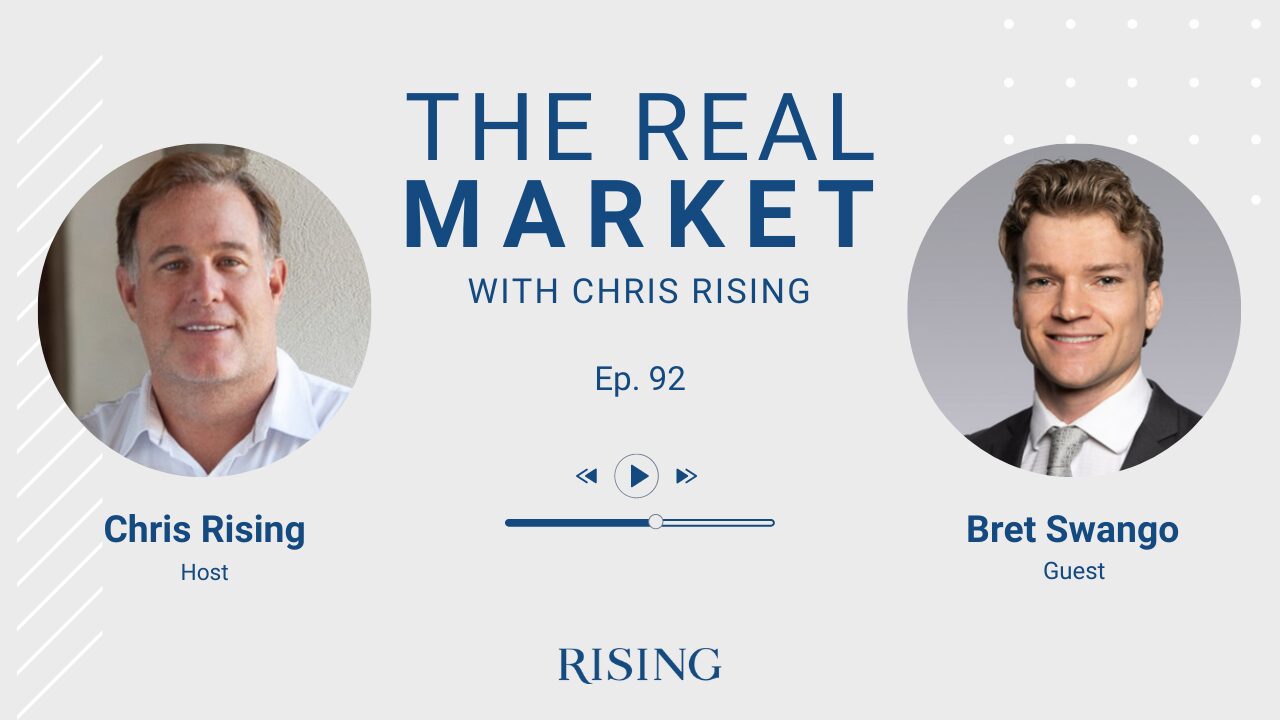
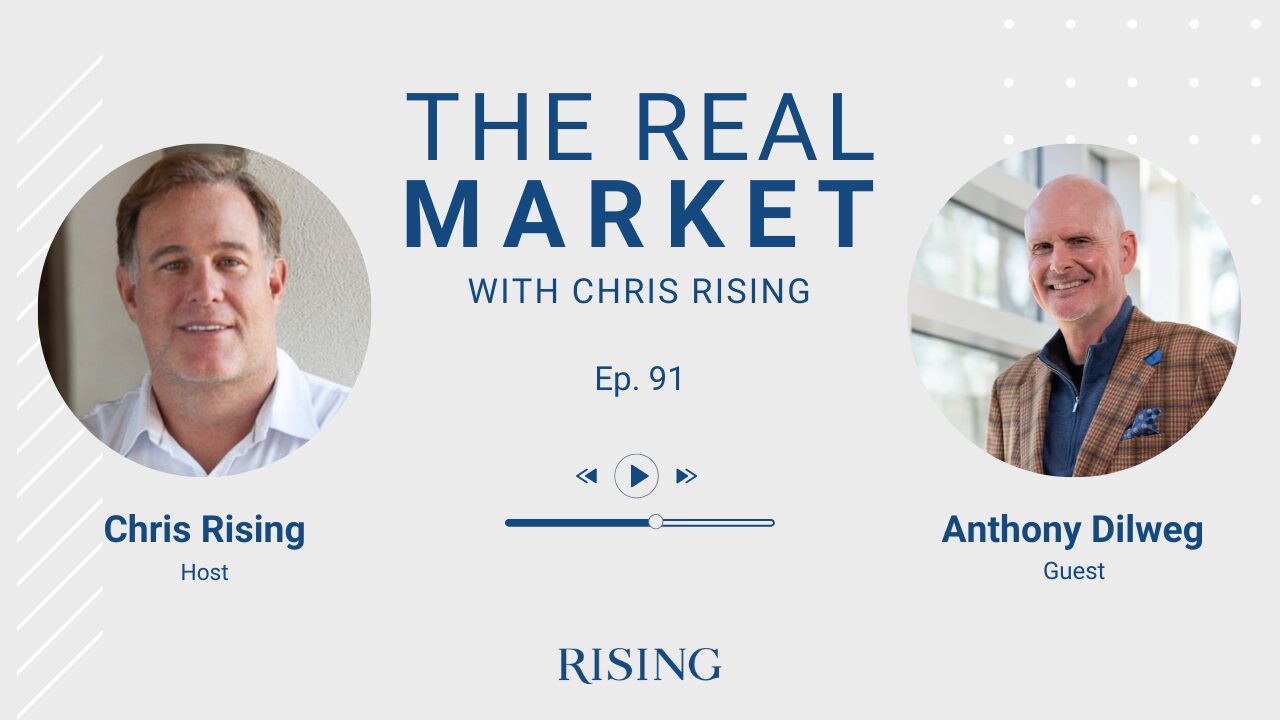
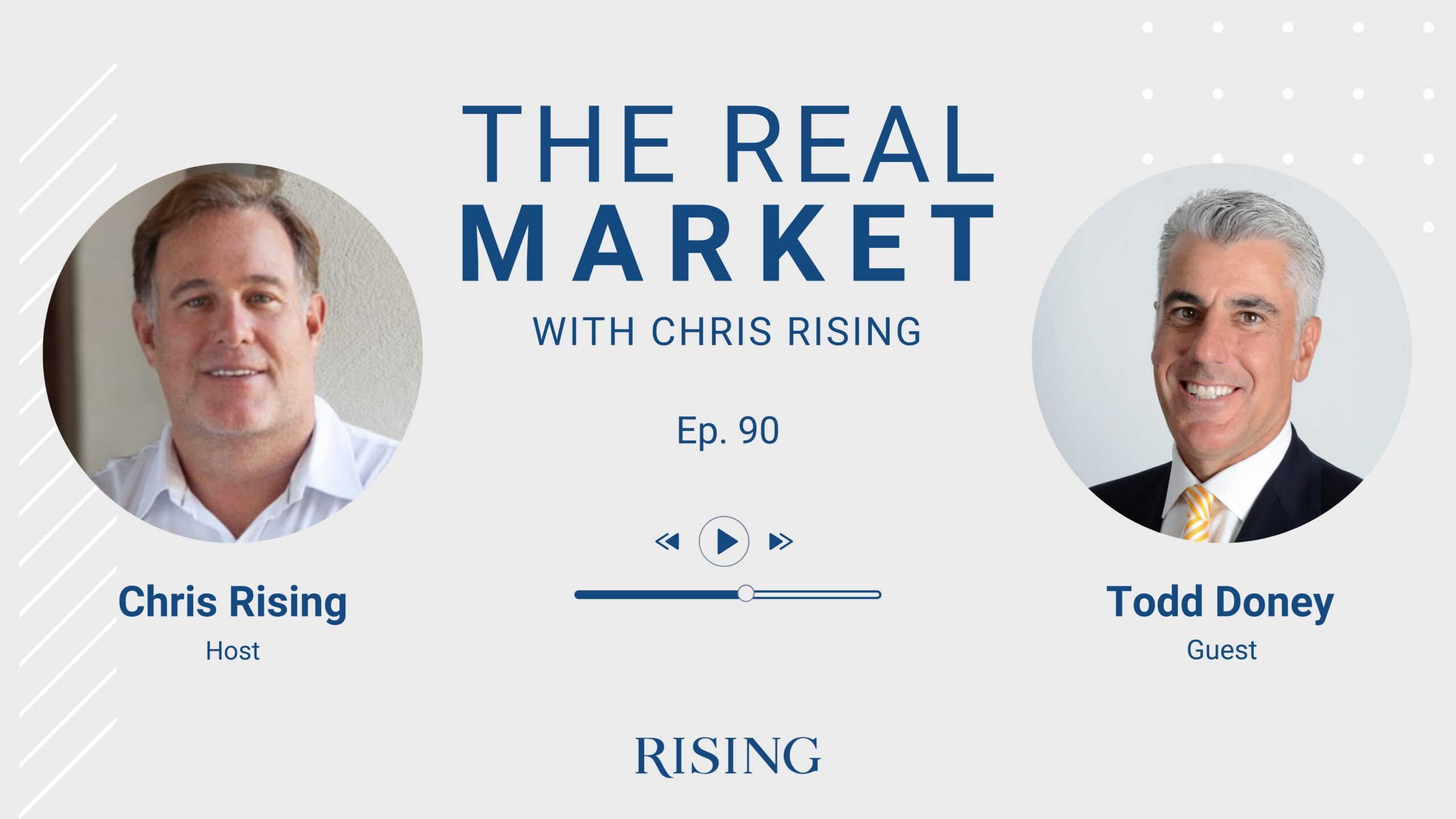
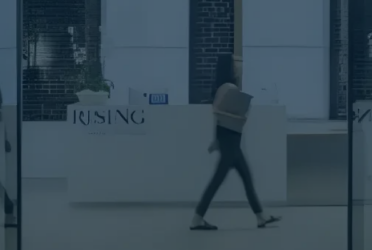
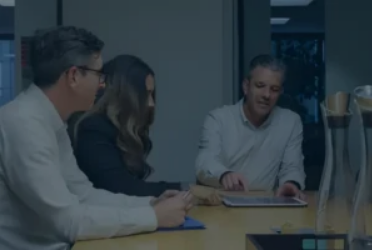
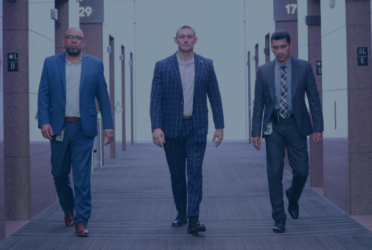
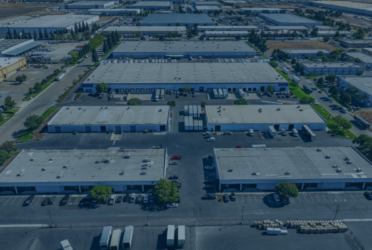
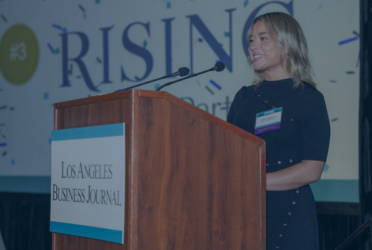
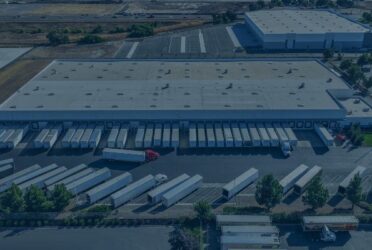
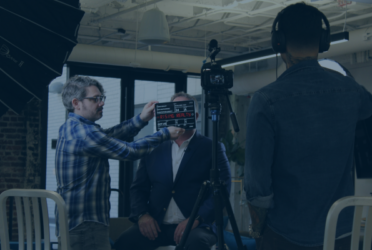
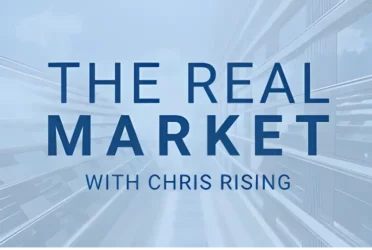 Podcast
Podcast